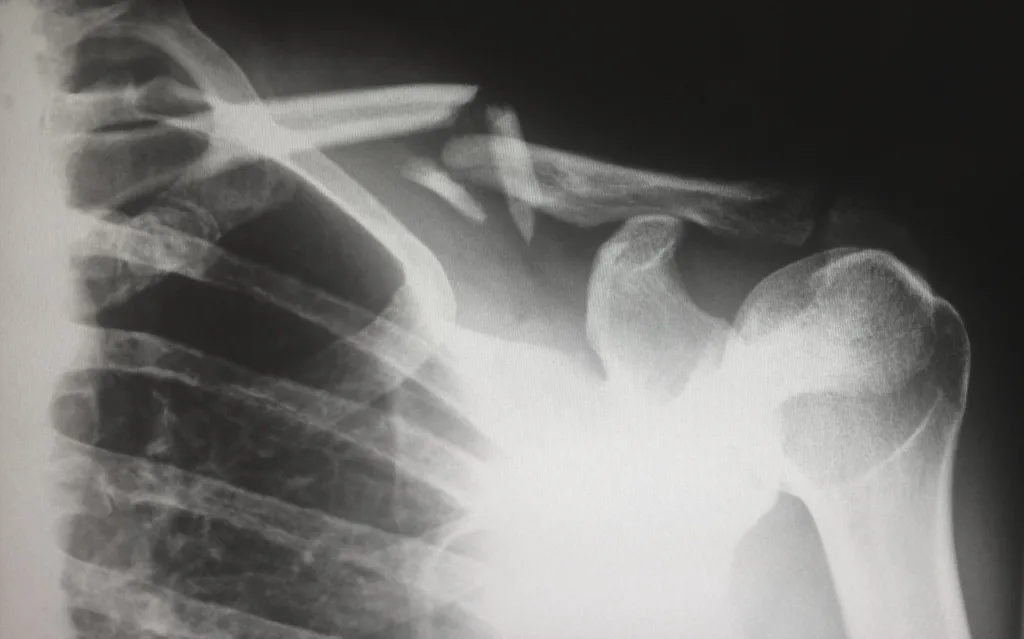Bones are an essential part of our body, providing support and structure, protecting vital organs, and helping us move. But have you ever wondered whether bones have nerves? The answer is yes, bones do have nerves, and they play a crucial role in our overall health and well-being.
The periosteal layer of bone tissue is highly pain-sensitive and an important cause of pain in several disease conditions causing bone pain, like fractures, osteoarthritis, etc. The majority of nerves in bone are found along blood vessels. These nerves serve a variety of important roles in the body, including the production of signals that provide spatial orientation (proprioception), interpret pain and noxious stimuli (nociception), recognize temperature changes, and allow the perception of non-painful tactile stimuli.
Proprioception is the ability of the body to sense its position and movement in space. Bones have proprioceptive nerve endings that help us maintain balance, coordination, and posture. These nerve endings provide feedback to the brain about the position and movement of our bones, which helps us adjust our movements accordingly.
Nociception is the ability of the body to detect and interpret pain. Bones have nociceptive nerve endings that can sense pain caused by fractures, sprains, or other injuries. When a bone is broken, the nerve endings in the bone are activated, sending pain signals to the brain. This is why a broken bone can be so painful.
Temperature sensitivity is also an essential function of nerves in bones. These nerves can sense changes in temperature and help regulate body temperature. For example, if a person is exposed to cold temperatures, the nerves in their bones can detect the change and send signals to the brain to initiate shivering to generate heat.
Finally, nerves in bones also play a role in our sense of touch. These nerves can sense non-painful tactile stimuli like pressure or vibration. This is important for our ability to feel and interact with the world around us.
Bones do have nerves, and they serve a variety of essential functions in our body. From providing feedback on our position and movement to detecting pain and regulating body temperature, nerves in bones are an integral part of our overall health and well-being.
Do Human Bones Experience Pain?
Yes, human bones can feel pain. The periosteal layer of bone tissue is highly pain-sensitive and is an important cuse of pain in several disease conditions that cause bone pain, like fractures, osteoarthritis, etc. The periosteum is a thin layer of connective tissue that covers the outer surface of the bone and contains many nerve endings, blood vessels, and cells that are responsible for bone growth and repair. When bone tissue is damaged or inflamed, the periosteum can become irritated and cause pain. This pain can be sharp, throbbing, or aching, depending on the severity of the injury or disease. It is important to note that not all bone pain is caused by the periosteum, and some conditions, like osteoporosis, may not cause pain until a fracture occurs. In any case, if you experience bone pain, it is essential to seek medical attention to determine the underlying cause and receive appropriate treatment.

The Location of Nerves in Bone
Nerves in bone are primarily found in close proximity to blood vessels. These nerves consist of both sensory and autonomic fibers, and are distributed throughout various regions of the bone, including the periosteum, Volkmann’s canals, bone marrow, osteochondral junction of the growth plate, and the attachment of the synovial membrane. The periosteum, which is the outer layer of bone, is particularly rich in nerve fibers. Volkmann’s canals, which are small channels that connect the periosteum to the innr layers of bone, also contain nerves. Nerves are also present in the bone marrow, which is the spongy tissue found inside bones. In addition, nerves are located at the osteochondral junction, which is the site where cartilage meets bone, and at the attachment of the synovial membrane, which is the membrane that lines joint cavities. Overall, nerves in bone are primarily associated with blood vessels and are distributed throughout various regions of the bone.
Understanding the Pain of a Broken Bone
When a bone breaks, the nerve endings in the bone itself are activated, which leads to the sensation of pain. These nerve endings are responsible for transmitting signals to the brain, which interprets them as pain. Additionally, a broken bone cases bleeding and inflammation in the surrounding tissues, which can also contribute to the feeling of pain. The bleeding and inflammation cause swelling, which puts pressure on the surrounding tissues, including nerves, leading to discomfort and pain. Furthermore, the body’s natural response to a broken bone is to release inflammatory chemicals, which can also contribute to pain and swelling. Overall, the experience of pain after a bone break is caused by a combination of nerve activation, tissue swelling and inflammation, and the release of inflammatory chemicals in response to the injury.
The Role of Nerves in Bones
Nerves in bones serve a crucial function in the body by providing valuable sensory information. These nerves are responsible for providing proprioceptive signals that help us understand our spatial orientation and movement. They also enable us to recognize pain and other noxious stimuli, interpret temperature changes, and perceive non-painful tactile stimuli. Overall, nerves in bones are essential for maintaining our physical balance and overall well-being.
The Most Painful Part of Bone
The femur, which is also known as the thigh bone, is often considered the most painful part of the bone to break. This is beause the femur is the longest and strongest bone in the human body and is responsible for bearing a significant amount of weight. The femur runs from the hip to the knee, and a break in this bone can cause excruciating pain, especially when weight is put on it. The femur is also surrounded by a large network of muscles, nerves, and blood vessels, which can further increase the level of discomfort and pain. Additionally, a fracture in the femur can take a long time to heal properly, requiring extensive medical attention and rehabilitation. Overall, breaking the femur is a serious injury that can cause severe pain and long-term consequences.

Source: medicalnewstoday.com
Do Human Bones Possess Sensitivity?
No, human bones do not have feelings in the sense that they do not have emotional responses or conscious experiences. However, bones do have nerves and pain receptors that allow us to feel physical sensations such as pressure, heat, and pain. These nerves and receptors are responsible for sending signals to the brain when there is an injury or strain on the bone. This is why we can feel discomfort or pain in our bones when they are injured or broken. Additionally, bones are an important part of our body’s overall sensory system, working in conjunction with muscles, tendons, and ligaments to provide feedback to the brain about our body’s position and movement.
The Impact of Bone Pinching on Nerves
Yes, a bone can pinch a nerve. When bones shift or move out of place, they can put pressure on surrounding tissues, including nerves. This pressure can cause a pinched nerve, which can result in pain, tingling, numbness or weakness. Additionally, conditions such as arthritis or bone spurs can also cause bones to press against nerves and lead to a pinched nerve. It is important to address the underlying cause of a pinched nerve to prevent further damage and alleviate symptoms.
The Impact of Blood on Bones
Yes, blood does touch your bones. Bones have a dense network of blood vessels that supply them with oxygen and nutrients. The bone marrow, which is located inside the bones, is responsible for producing new blood cells, including red blood cells, white blood cells, and platelets. The periosteum, which is a thin layer of tissue that covers the outside of bones, also has a network of blood vessels that supply the bone with nutrients and oxygen. When a bone is fractured, these blood vessels can be damaged, causing serios bleeding. So, while bones may be hard and rigid, they are still living tissue that requires a constant supply of blood to function properly.
The Body Part with the Most Pain Nerves
The human body is equipped with vrious types of nerve endings that respond to different types of stimuli, including pain. However, researchers have found that some areas of the body are more sensitive to pain than others. According to studies, the forehead and fingertips have the highest concentration of pain receptors, making them the most sensitive parts of the body to pain. This means that these areas are more responsive to pain stimuli and can detect even the slightest touch or pressure that can cause discomfort or pain. The reason for this sensitivity is believed to be due to the high number of nerve endings present in these regions, allowing for a greater ability to detect and transmit pain signals to the brain.

The Long-Term Effects of Broken Bones
Broken bones do not necessarily hurt forever. Most people who experience a fracture will eventually heal and recover to the point whre they no longer experience any pain. However, in some cases, people may continue to experience pain long after the fracture and soft tissues have healed. This is known as chronic pain and can be caused by a variety of factors, including nerve damage, inflammation, and arthritis. It is important to seek medical attention if you experience ongoing pain after a fracture, as there may be underlying issues that need to be addressed. Your doctor may recommend pain management techniques, physical therapy, or other treatments to help manage your pain and improve your quality of life.
Do Broken Bones Eventually Stop Causing Pain?
When you suffer a broken bone, it is natural to experience pain during the acute phase of the injury. However, as the healing process progresses, the pain should gradually reduce and eventually stop. In most cases, broken bones do stop hurting once they have fully healed. The time it takes for the pain to completely subside can vary depending on the severity of the fracture, the location of the injury, and the individual’s overall health.
It is important to note that some people may experience chronic pain even after the broken bone has healed. Chronic pain is defined as pain that lasts for longer than three to six months after the initial injury. This can occur due to a variety of factors, such as nerve damage, scar tissue formation, or the development of arthritis at the site of the injury.
If you are experiencing prolonged pain after a broken bone has healed, it is important to seek medical attention. Your doctor can evaluate your symptoms and determine if furthr treatment, such as physical therapy or medication, is necessary to manage your pain and improve your overall quality of life.
The Long-Term Effects of Broken Bones
Broken bones may continue to hurt years later in some cases, even after the fracture and soft tissues have healed. This type of pain is known as chronic pain and can be caused by a variety of factors. The development of scar tissue or nerve damage during the healing process may lead to chronic pain. Additionally, underlying conditions such as arthritis or other medical conditions can exacerbate the pain. It is essential to seek medical attention if you experience ongoing pain after a fracture has healed to determine the cause and get appropriate treatment.
Can Bones Experience Bleeding?
Yes, bones can bleed. Bones are living tissue that have their own blood supply. When bones are injured, such as in a fracture or a deep bruise, the blood vessels wthin the bone can rupture and cause bleeding. This bleeding is called intraosseous bleeding and can be very painful. In addition to bleeding, the damaged bone tissue can release substances that trigger inflammation and the formation of blood clots to help repair the injury. While bones are much harder to bruise or injure than skin, it is still possible for bones to be bruised or damaged, leading to bleeding and other complications.
The Painful Nature of Nerves
Nerves can be extremely painful because they are responsible for transmitting signals throughout the body, including signals of pain. When a nerve is damaged or injured, it can become hypersensitive and send pain signals even when thee is no actual injury or stimulation. This is known as neuropathic pain. Additionally, inflammation or pressure on a nerve can cause pain, as well as conditions such as nerve compression or pinched nerves. The intensity and persistence of nerve pain can vary widely depending on the underlying cause and individual factors. Treatment for nerve pain typically involves addressing the underlying condition and may include medications, physical therapy, or other interventions to reduce inflammation and promote healing.
Do Teeth Have Nerve Endings?
Yes, teeth have nerves. The dental pulp, which is located inside the tooth beneath the dentin layer, contains nerves and blood vessels. These nerves are responsible for transmitting signals to and from the brain, allowing us to feel sensations of pain, pressure, and temperature in our teeth. When the dental pulp becomes damaged or infected, it can cause severe pain and discomfort. Thus, it is essential to seek immediate dental treatment to prevent further complications.
Conclusion
In conclusion, bones do have nerves that play important roles in the body’s functions. These nerves are mainly found along blood vessels and serve various purposes, including proprioception, nociception, temperature recognition, and tactile perception. The periosteal layer of bone tissue is highly pain-sensitive and can caue pain in several bone-related disease conditions. When a bone is broken, the nerve endings within the bone itself can cause pain at the site of the fracture, and the bleeding that results from the break can lead to swelling and further discomfort. Overall, the presence of nerves in bones highlights the complex and interconnected nature of the human body and its various systems.
